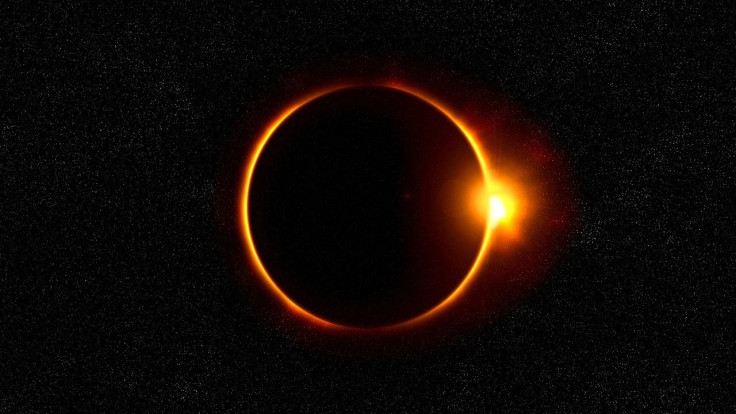2020 Eclipses To Watch If You Missed The 'Ring Of Fire'

KEY POINTS
- The last eclipse for 2019 is an annular solar eclipse also called"ring of fire"
- Most years have four eclipses, but 2020 is expected to have six
- The first eclipse of 2020 will occur on Jan. 10
Most years have four eclipses, but 2019 had a total of five -- three of which were solar and two were lunar eclipses. In fact, the last eclipse for 2019 is quite special, because it also comes rather like a Christmas present.
Called the “ring of fire,” the last solar eclipse of 2019 is an annular solar eclipse. This means that the moon does not cover the sun completely, leaving a bright ring around the Moon.
And, just a few weeks from now, we will already witness the first of six eclipses expected in 2020.
Jan. 10 Penumbral Lunar Eclipse
A penumbral lunar eclipse happens when the Sun, the Earth and the Moon are imperfectly aligned and the Earth ends up blocking some of the Sun’s light from reaching the Moon. When this happens, the Earth covers part or all of the Moon with its penumbra or the outer part of its shadow.
On Jan. 10, the first eclipse of 2020 will be a penumbral lunar eclipse and it will be visible from Europe, Africa, Asia, and Australia. In those locations, the beginning and end of the penumbral eclipse will not be visible to the naked eye. It is only until about 2/3 of the Moon is covered in the penumbra that the eclipse can be directly observed.
This penumbral eclipse is part of the Dec. 26, 2019 eclipse season, or the period in which the Sun appears close enough to one of the Moon’s nodes, making eclipses possible. Typically, eclipse seasons last about 34 days then repeats with 173-day intervals.
June 5 Penumbral Lunar Eclipse
Months later, on June 5, another penumbral lunar eclipse will occur and it will be visible from Africa, Central Asia, the Middle East and most of Australia. Unfortunately, the eclipse will not be visible from North America and most of South America.
June 21 Annular Solar Eclipse
Just two weeks later, Africa, eastern Europe, and southern Asia will have another glimpse of an annular solar eclipse, while those in central Africa, South Asia, China, and the Pacific will witness a partial eclipse.
July 5 Penumbral Lunar Eclipse
Another eclipse will occur on July 5, and this time it will be visible from the Western hemisphere. Specifically, it will be visible from the Americas, southwestern Europe, and Africa.
The June 5 lunar eclipse up until the July 5 lunar eclipse all occur during a single eclipse season.
Nov. 30 Penumbral Lunar Eclipse
After the June-July eclipse season, another one will open up and the next eclipse will be another penumbral lunar eclipse on Nov. 30. The event will be visible from Asia, Australia, the Pacific, and the Americas.
Dec. 14 Total Solar Eclipse
The final eclipse of the year will be a total solar eclipse that will be visible in the south Pacific, Chile, Argentina, and the South Atlantic. During the event, a partial eclipse will also be visible from the Pacific, southern South America and Antarctica.
Anyone who wants to witness any of these eclipses must remember that looking directly at the sun, even during an annular eclipse, is dangerous and can lead to blindness or other forms of eye damage. To safely enjoy the phenomenon, it is important to wear special protective eyewear, as basic sunglasses will not be able to protect the eyes, even if it has UV protection.
Those who cannot get their hands on special eclipse glasses can simply make a pinhole camera at home.
© Copyright IBTimes 2024. All rights reserved.






















